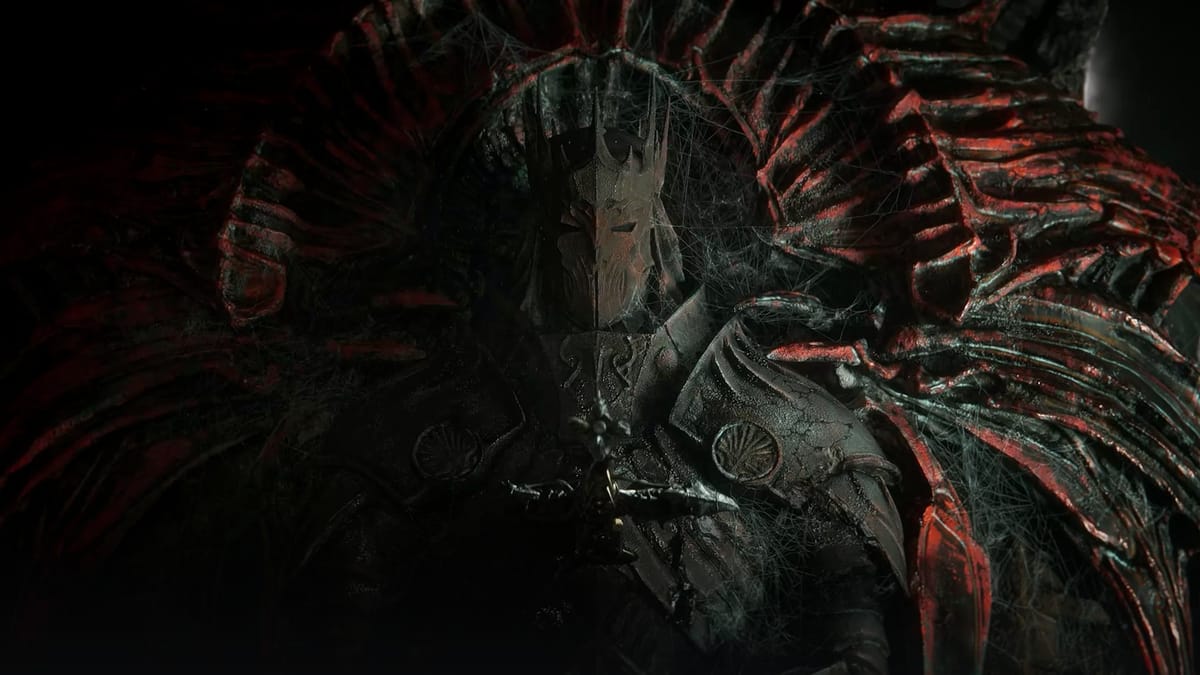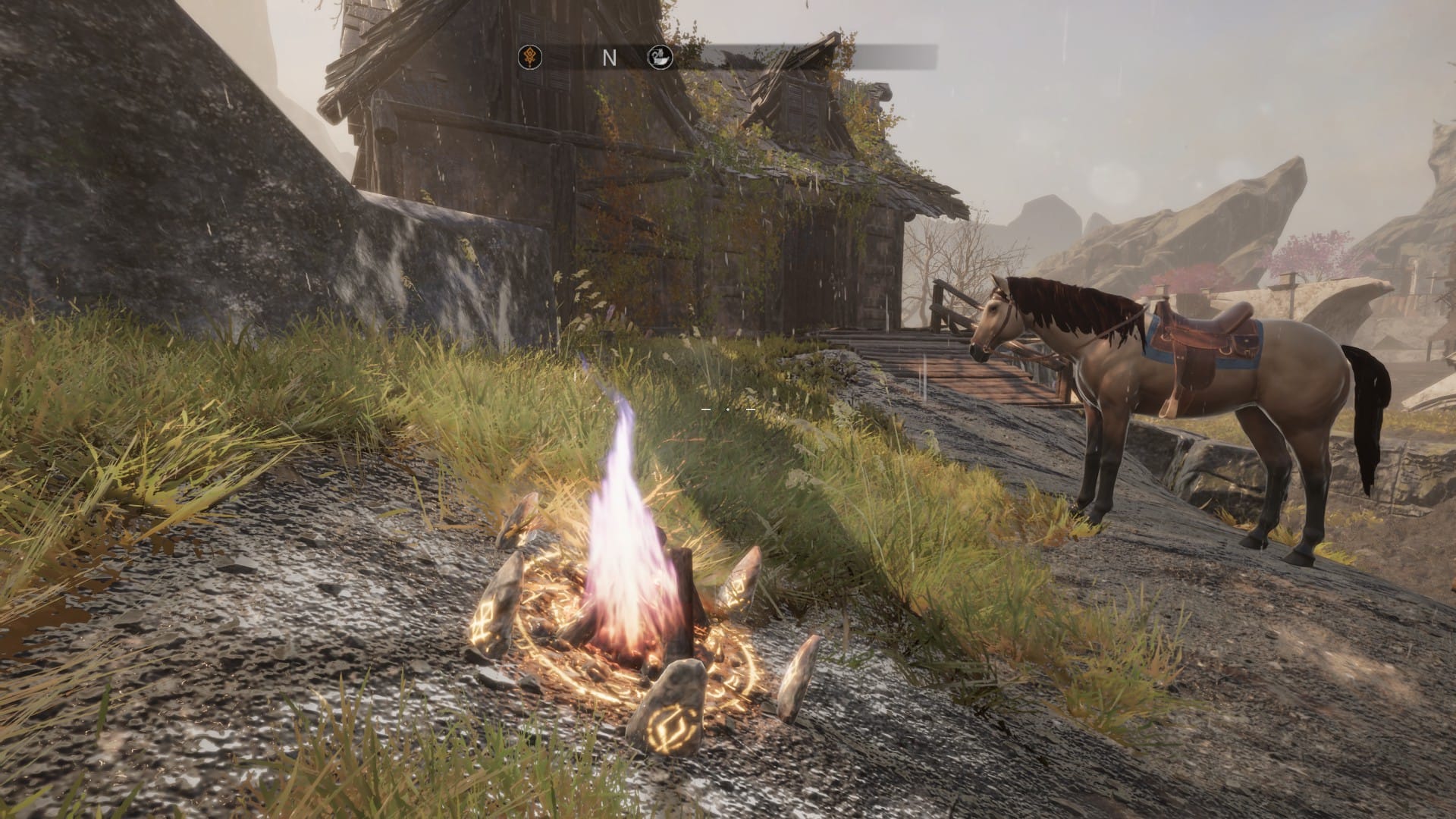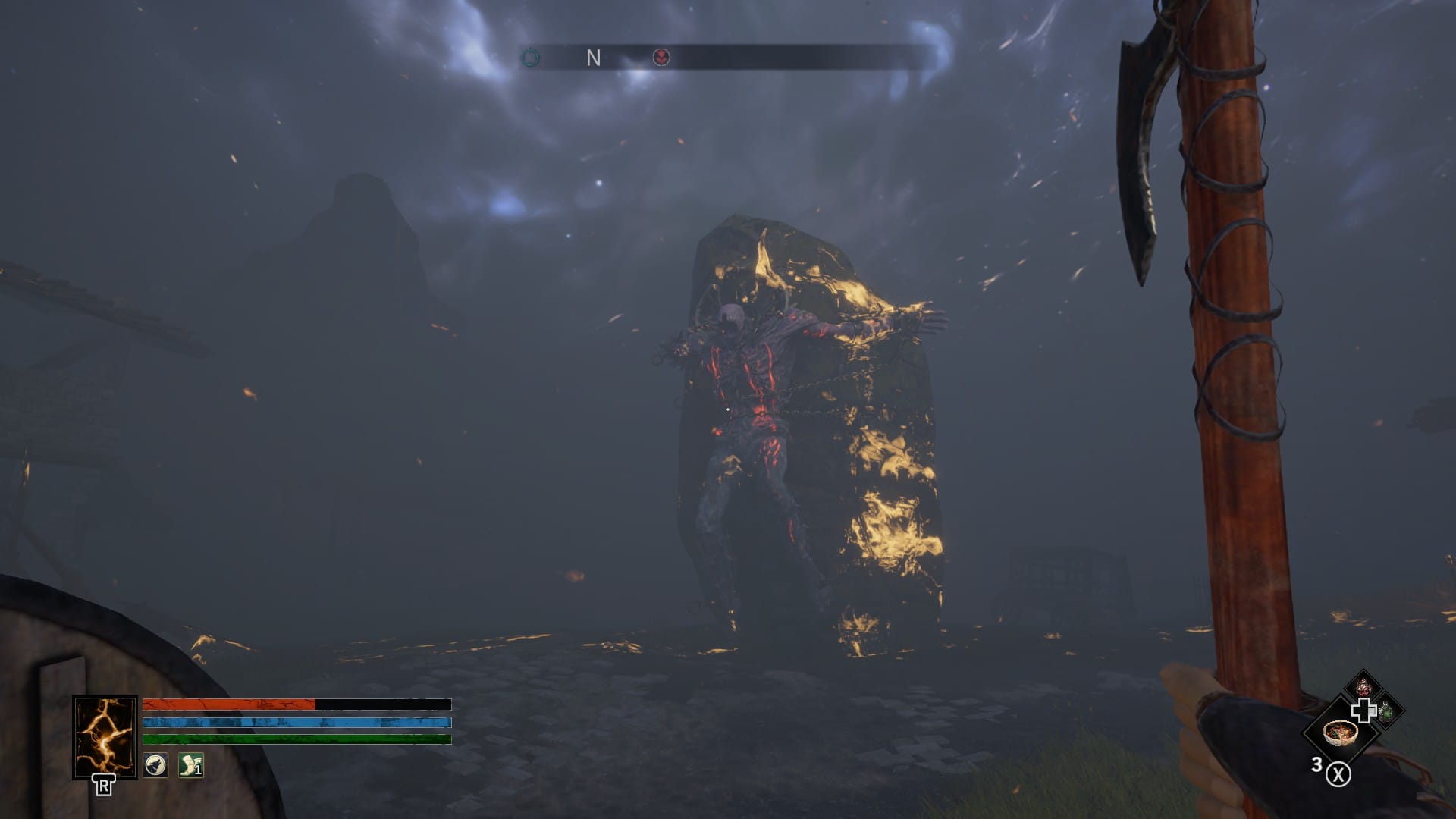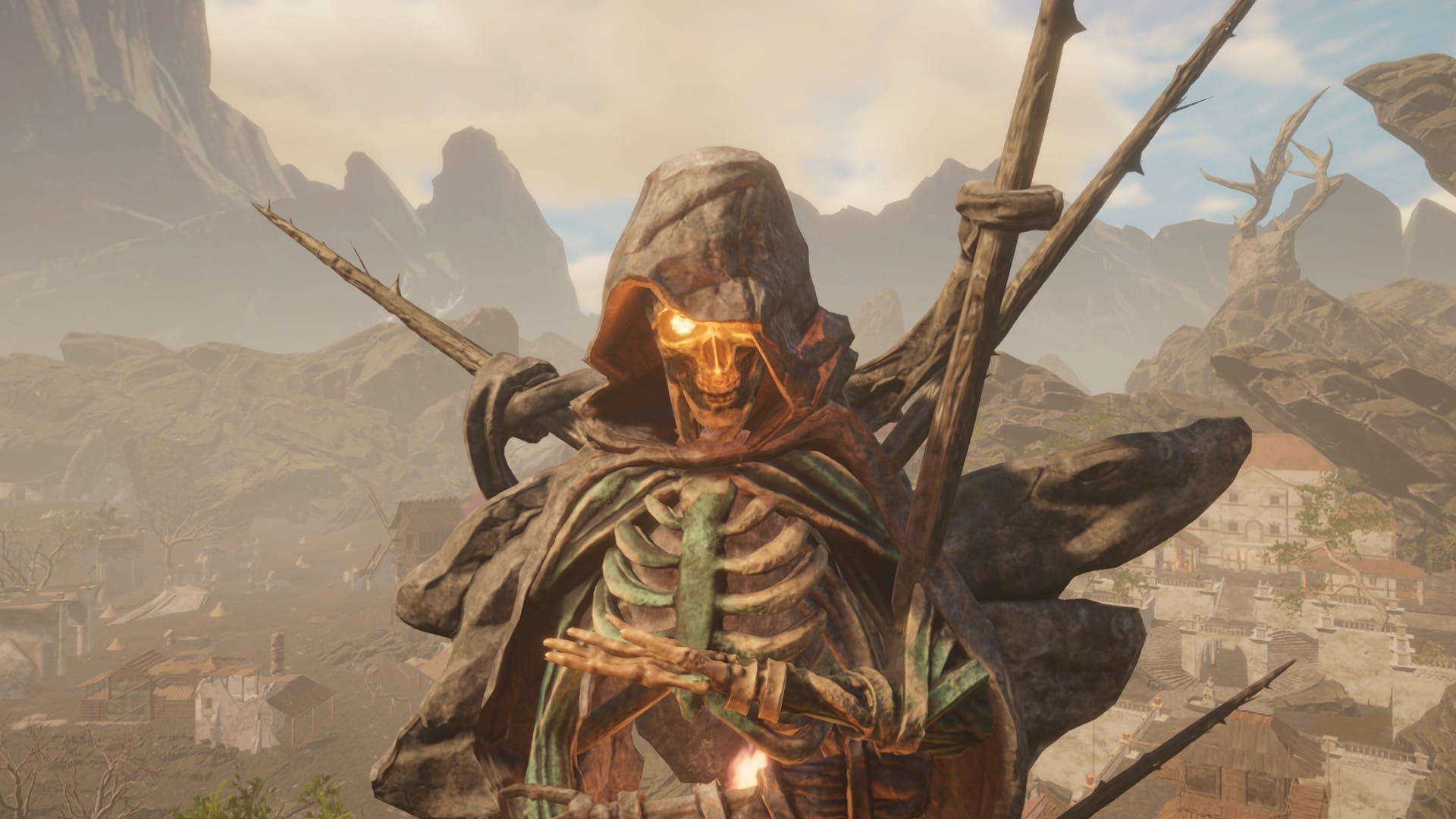
Historical Fiction is one of my favorite genres, particularly stories surrounding King Arthur’s time. Arthurian legends have been told and retold again, each time with a new twist or perspective to keep the tales fresh and unique. Polish indie studio Questline are the masterminds behind Tainted Grail: The Fall of Avalon, a new Arthurian dark fantasy roleplaying game that boasts 50-70 hours of exploration. Fans of medieval dark fantasies rejoice, for we have a new entry you need to add to your lineup.
Tainted Grail: The Fall of Avalon takes place hundreds of years after the passing of King Arthur, who led his people to safety from the wicked Red Death, settling in the land of Avalon. Unfortunately, the Red Death is returning, and the realm is slowly sinking back into chaos. The description of the Red Death may sound familiar – a plague that quickly spreads, infecting potentially millions across the world, characterized by painful red rashes, bleeding, and eventual death. This is very similar to the Black Death (Bubonic Plague) that plagued Europe and Asia in the 14th century, where those afflicted presented with painfully swollen lymph nodes and a black rash. Of course, the Black Plague was seemingly centuries after King Arthur’s time – it is believed the Plague of Justinian could have been the Bubonic Plague – but the parallels can be seen here.
Tainted Grail is a first-person action-fantasy adventure that plays like The Elder Scrolls V: Skyrim. There are a variety of weapons, abilities, items, and more at your disposal, as you would expect from a medieval dark fantasy. With plenty of options to choose from, you can adjust your playstyle on the go by simply opening the weapon wheel, which lets you pick one of your weapon configurations or other tools. You can have up to four of these configurations saved, going for a two-handed sword or other heavy weapon, short sword and shield, bow and arrow, spells, and many other combinations. Weapons can also be combined with coatings to inflict status effects like bleeding or burning on opponents, which causes their health to slowly drain.
I primarily swapped between the short sword with shield and the bow and arrow as these felt the most effective in combat. Heavy weapons have always been too slow for me, and, particularly in this instance, weren’t doing as much damage as I would have expected. I experimented with magical abilities briefly, but much like heavy weapons, I wasn’t seeing the results, so they’ve been cast aside for now, though I may try out some combinations with short swords and other one-handed melee weapons in the future.
Cooking and Alchemy are also handy skills to level up. Different ingredients collected in the world can be used to cook healthy foods from recipes you find while exploring that help restore HP, as well as any recipes you discover by combining random ingredients. Different brews can be concocted for HP, mana, and stamina, among other things. You can’t discover any of the potions by randomly combining ingredients like you can with cooking, though I’m not sure you’d really want to. Alchemy is a finicky business, so it’s best to stick to what you know.
You can explore the setting at your own pace, including the many dungeons, 200 side quests, and dozens of possible endings, likely making that 50-70 hour estimate a speed run time and not a completionist expectation. It’s easy to get lost in this world. I found myself drawn to any ruins I came across, scavenging for resources, gear, ingredients, and anything else I could get my grubby little hands on. I also wanted to know more about Avalon and its many secrets, which you can easily dive into by speaking with the locals in villages and forts and finding the many relics and documents littered about, sometimes even buried in the ground. But an unlikely source of knowledge is in your ethereal companion, the once and future king himself, Arthur Pendragon.

Seemingly reawakened, but not entirely whole, King Arthur wants you to help reunite him with the shards of his soul, which are scattered throughout Avalon. Between expeditions, you can rest at a campfire and hear what little stories he’s able to piece together from his past and gain insight into Avalon and its people. He’ll live inside your head (rent free), giving you additional powers and abilities with each shard of his soul that is recovered, such as the ability to slow down time.
Campfires serve many other purposes as well, including allocating your Skill and Attribute points, cooking a tasty meal, fast traveling to distant locations, and more. It’s also a place of rest as settling down by the campfire can be used to progress time forward for time-specific objectives as well as avoiding the Wyrdness that falls over Avalon at night.
The Wyrdness is a sort of primordial fog that envelopes everyone and everything it touches in darkness, corrupting minds and turning people and creatures into ghastly monsters. Nighttime is when this fog is the most potent. While you can ‘rest’ through it at a bonfire, if you choose to stay awake, you’ll face entirely new creatures like the Wyrdspawn, a chaotic creature that takes on a human-like appearance. The Wyrd nights are very tense as you also can’t see more than maybe twenty yards around you, and you know something is out there watching you, waiting to strike.

However, those Wyrd nights are also a great time to farm Ethereal Cobwebs, which are needed in various quests but can also be used to expand a bonfire’s usefulness to include Alchemy, Fast Travel, and identifying special treasures that have been collected.
The Attributes you level up are the typical RPG-types you would expect: Strength, Dexterity, Endurance, etc. Leveling these up increases core stats, such as health, critical hit damage, and perception, but beyond that, you’ll come across gear and weapons that require these attributes to be leveled up in order to take advantage of all they have to offer. New armor and weapons may give you boost to particular attributes or have other features, however those won’t activate if you don’t have the right attribute level, nor will you benefit from the higher armor level. You only get one attribute point every time you level up, so pick your point allocations carefully so you can use the gear you need.
Unfortunately, a lot of the armor I’ve found throughout my travels is oftentimes much higher leveled than I am, even when I’m following the main storyline. I’d expect that with progression of the story and knocking out a few side objectives along the way, I’d at least be within just two levels of any new gear I come across as I take down my enemies, but I’ve often found that anything I pick up is more like 4 or 5 levels higher, or would require higher attribute levels than would be seen at a particular player level, making them feel almost unusable. Tainted Grail can feel like a big of a slog at times, taking a while to level up your character so you can upgrade those skills and attributes. There are many ways to earn experience, including just running around and discovering new areas, but I’m not sure the progression fits the demand without having to add additional grinding on top.

On the flip side, while there may be gaps between armor levels, you have the ability to upgrade what you already have. At Grindstones, you can upgrade your current gear, increase armor levels and reduce weight so you don’t get overencumbered so easily, and more. This helps a lot to bridge those gaps between your current setup and the stuff you pick off your fallen enemies. Anything you’re not using can be stored away in one of the many Stash chests found throughout the map.
Upgrading skills was a little intimidating at first. There are multiple skill trees for each attribute, and you earn one Skill Point every time you level up. However, just like with everything else we’ve talked about within gameplay elements, It’s easy to grab the skills you need that suit your playstyle. Having skills categorized by Attribute, and then further sub-categorized by weapon type, attack vs. defense, etc., makes it easier to pinpoint your desired skillpath and unlock what you want instead of having to waste points on things you’ll never use. Skills can also be leveled up multiple times, increasing their respective benefits and boosts. I think it’s a very intuitive system that helps to keep the player focused on their overall objective instead of spending ages grappling.
With all of these unique gameplay elements, lore, loads of characters and creatures, and everything else you come across in Tainted Grail, it is disappointing that the Journal utility is actually pretty barebones. The Bestiary does somewhat well at letting you know more about the magical and monstrous creatures you face, however the Lore, Characters, and Tutorials tabs are severely lacking, even hours into the story. After over ten hours, I’d still only gained one entry under the Characters tab, a character that I’d met at the very beginning of the game. Somehow everyone I have met, including fairly important characters who I frequently revisited, were not getting added.

I also appeared to not have found a single piece or Lore anywhere in the world, even after discovering numerous books and documents regarding religion, people, and places in Avalon, and after having many conversations with King Arthur about his memories. This would all be helpful information to be able to reference throughout the game, and I’m surprised it was missed on such a large scale.
Unfortunately, the misses don’t stop there. With my recent acquisition of the RTX 5060Ti, I was excited to test out some higher graphics settings, however I found Tainted Grail to be entirely unplayable when set to all the highest settings. Dropping down to Medium is recommended (for my hardware, maybe yours will be different), but I’m still having some troubles with stuttering, particularly when first launching back into the game. I also have a very consistent screen tear along the lower third that does not go away even after rebooting. This game isn’t some sort of technical marvel using the latest and greatest in graphics technology, but it is a beautiful world that I wish I could fully appreciate, were it not for these performance hiccups.
Tainted Grail: The Fall of Avalon
Great
Tainted Grail: The Fall of Avalon is an exciting dark-fantasy adventure with fun, familiar gameplay and a fresh take on historic tales of the once and future king. You’ll battle and grind your way through countless hours of content, exploring every nook and cranny, until you’re overencumbered by treasures and knowledge, and gear you can’t even use.
Pros
- Unique and exciting retelling of a classic historical tale
- Play your way with different weapons, skills, and attributes
- Beautiful world that’s easy to get lost in
Cons
- Some performance issues, even with reduced settings
- Journal is severely lacking in entries after hours of gameplay
This review is based on a retail PC copy provided by the publisher.